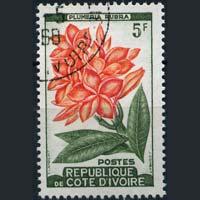Current Developments in Ivory Coast: A West African Power

Introduction
Ivory Coast, known for its abundant natural resources and vibrant culture, has become increasingly significant on the global stage. With a rapidly growing economy, the country draws international attention for its agricultural exports, particularly cocoa and cashews, while also expanding its manufacturing and services sectors. As West Africa’s second-largest economy, the developments in Ivory Coast are noteworthy for investors, policymakers, and global citizens alike.
Economic Growth and Key Industries
Recent data from the World Bank indicates that Ivory Coast’s economy has faced challenges due to factors such as COVID-19 and global supply chain disruptions. However, projections suggest a positive recovery, with GDP growth expected to bounce back to approximately 7% in 2024. The agricultural sector remains a cornerstone of the economy, with the country being the world’s leading cacao producer. In 2022, the cocoa industry alone generated over $3 billion in exports. Additionally, cashew nuts have emerged as a critical cash crop, with production seeing an annual increase of approximately 10%.
Political Landscape and Stability
The political climate in Ivory Coast has stabilised significantly since post-civil war turmoil in the early 2000s. Elections held in 2020 were largely peaceful, fostering a sense of optimism amongst citizens and investors alike. The current government is focused on infrastructure development, job creation, and improving healthcare, all of which aim to support sustainable economic growth. Despite challenges, including youth unemployment and regional disparities, the government’s commitment to national development initiatives remains strong.
Cultural Heritage and Tourism
Ivory Coast is increasingly positioning itself as a tourist destination, boasting rich cultural heritage, beautiful beaches, and national parks. The government has invested in promoting tourism, aiming to boost this sector’s contribution to the economy. Popular sites like the Basilica of Our Lady of Peace in Yamoussoukro and the lush landscapes of Taï National Park showcase the country’s natural beauty and cultural significance, appealing to both local and international tourists.
Conclusion
The future of Ivory Coast appears promising as it continues to recover from economic setbacks and build a stable political environment. The growth of key industries such as agriculture and tourism presents vast opportunities for both local and foreign investors. As West Africa’s economic landscape evolves, staying informed about developments in Ivory Coast will be vital for anyone looking to engage with this dynamic and culturally rich nation.









